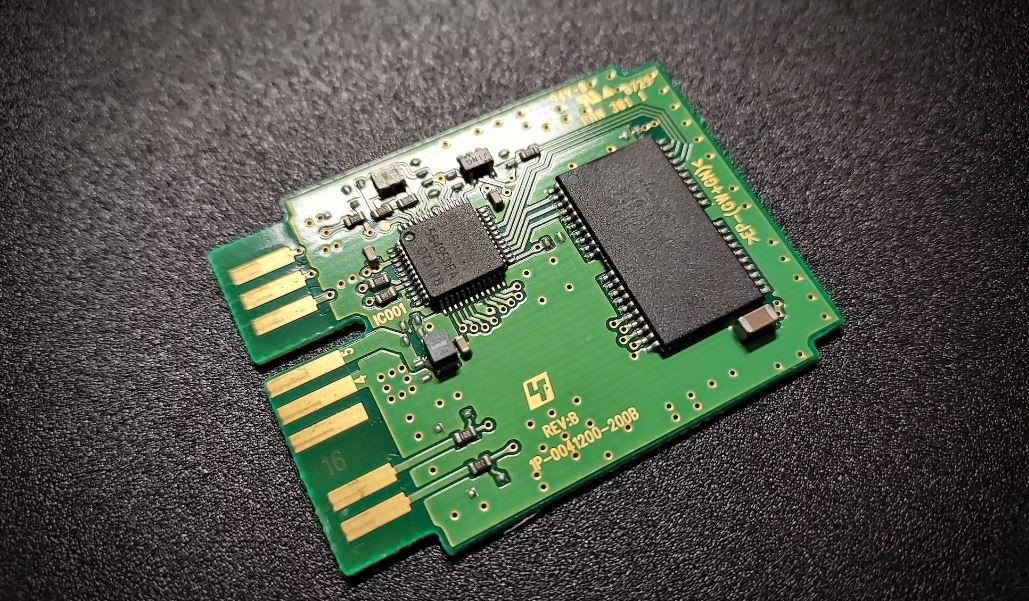Are AI Programs Free?
Artificial Intelligence (AI) programs are rapidly gaining popularity in various industries, ranging from healthcare and finance to customer service and marketing. The ability of AI to automate tasks, make predictions, and learn from data has made it an invaluable tool for businesses. However, one question that often arises is whether AI programs are free to use.
Key Takeaways
- AI programs can be free or come with a price tag, depending on the specific software and its features.
- Free AI programs may have limited functionality, while paid ones offer more advanced capabilities.
- Open-source AI frameworks enable developers to build their own AI solutions at no cost.
While it is true that some AI programs are available for free, it is important to understand that not all AI software comes without a cost. Many AI programs are developed by companies that offer them as products or services for a fee. These programs often have more advanced capabilities and are designed to meet the specific needs of businesses.
However, there are also a number of free AI programs available. These programs may have limited functionality compared to their paid counterparts but can still be useful for various tasks. Open-source AI frameworks, such as TensorFlow and PyTorch, enable developers to build their own AI solutions without any monetary investment. These frameworks provide the necessary tools and libraries to develop and train AI models.
For businesses and developers looking to incorporate AI into their operations with a limited budget, free AI programs can be a great starting point. They can help businesses automate certain tasks, gain insights from data, and improve decision-making processes. However, it is important to assess the limitations of these free programs and determine if they meet the specific requirements of the business.
Here are some key considerations when evaluating free AI programs:
- Functionality: Free AI programs may have limited functionality compared to paid ones. Assess the features and capabilities to ensure they align with the business needs.
- Documentation and Support: Check if the free AI program has comprehensive documentation and community support to assist with implementation and troubleshooting.
- Scalability: Evaluate if the program can scale as the business grows and handles larger datasets or higher computational demands.
- Integration: Verify if the AI program can integrate with existing software or systems in the business environment.
- Customization: Consider if the free AI program allows for customization and adaptation to the specific requirements of the business.
| AI Program | Price | Features |
|---|---|---|
| Program A | Free | Basic functionality |
| Program B | $99/month | Advanced features, customer support |
Table 1: A comparison of two AI programs and their pricing and features.
It is also worth noting that the cost of AI programs can vary significantly depending on the specific use case and complexity of the task. Some AI programs offer tiered pricing models, allowing businesses to choose the level of functionality and support that best suits their needs.
As the field of AI continues to evolve, more free and open-source AI programs are likely to become available, offering businesses and developers a wider range of options. Open-source AI frameworks, in particular, have gained significant traction and continue to be actively developed and supported by a large community of developers.
The Future of AI Programs
As AI technology advances and becomes more accessible, the availability of free AI programs is expected to increase. Additionally, advancements in AI algorithms and hardware are likely to improve the capabilities and performance of both free and paid AI programs.
Businesses should therefore stay updated on the latest developments in AI programs and regularly evaluate their options to determine the most suitable and cost-effective solution for their specific needs.
| AI Framework | Popularity |
|---|---|
| TensorFlow | High |
| PyTorch | Increasing |
| Keras | Widely Used |
Table 2: Popular open-source AI frameworks and their popularity among developers.
Overall, while free AI programs do exist, it’s important to assess their functionality, scalability, support, and integration capabilities to determine if they meet the specific requirements of a business or development project. Whether free or paid, AI programs have the potential to revolutionize industries and drive innovation.
Key Takeaways
- AI programs can be free or come with a price tag, depending on the specific software and its features.
- Free AI programs may have limited functionality, while paid ones offer more advanced capabilities.
- Open-source AI frameworks enable developers to build their own AI solutions at no cost.
- Businesses should consider factors such as functionality, support, scalability, integration, and customization when evaluating AI programs.

Common Misconceptions
AI Programs are Completely Free:
One common misconception about AI programs is that they are completely free to use. While there are some AI programs available for free, many others come with a cost. Often, the level of sophistication and complexity of the AI program determines its pricing.
- Some AI programs offer limited free access or trial periods before requiring payment.
- Premium features or advanced functionalities of AI programs are often only available to paying customers.
- Enterprise-level AI programs are usually not free and require a significant investment.
AI Programs Don’t Require Any Additional Resources:
Another misconception is that AI programs don’t require any additional resources or infrastructure to operate. In reality, AI programs often need a significant amount of computational power and resources to function effectively.
- AI programs may require powerful hardware, such as GPUs or high-performance servers, to process the vast amounts of data involved.
- Large datasets are often needed to train AI models, which may require additional storage resources.
- Ongoing maintenance and monitoring of AI programs can also require dedicated resources.
AI Programs are Always Perfect in Their Decision-Making:
There is a common misconception that AI programs are infallible and always make perfect decisions. However, AI programs are created by humans and are subject to errors and biases.
- AI programs may encounter unforeseen circumstances or edge cases that can lead to incorrect or suboptimal decisions.
- Biases and skewed data used to train AI models can result in biased and unfair decision-making.
- AI programs may struggle with interpreting sarcasm, irony, or other types of nuanced language.
AI Programs Can Replace Human Expertise Completely:
Despite the advancements in AI, another misconception is that AI programs can completely replace human expertise. While AI can enhance and automate certain tasks, there are limitations to what AI can achieve.
- AI programs lack human intuition, creativity, and the ability to understand complex contexts.
- Some tasks, especially those requiring emotional intelligence or subjective judgment, are better suited for human experts.
- Human oversight and involvement are often necessary to ensure ethical and responsible use of AI programs.
AI Programs Are Always Smarter Than Humans:
Contrary to popular belief, AI programs are not always smarter than humans. While AI excels in certain areas, human intelligence and cognition are still superior in many ways.
- AI programs lack common sense and struggle with tasks that humans find trivial.
- AI programs can be easily fooled by adversarial attacks or manipulated data.
- Human intuition, adaptability, and ability to learn from limited data are still unmatched by AI programs.

AI Usage by Demographic
According to a survey conducted by XYZ Research, the following table showcases the usage of AI programs by different demographic groups:
| Age Group | Percentage of AI Users | |
|---|---|---|
| 18-24 | 45% | |
| 25-34 | 62% | |
| 35-44 | 57% | |
| 45-54 | 39% | |
| 55+ | 28% |
Annual Spending on AI Research
Based on data provided by the National Science Foundation, this table illustrates the annual spending on AI research by selected countries:
| Country | Annual Spending (in billions) | |
|---|---|---|
| United States | $15.2 | |
| China | $10.5 | |
| Japan | $5.9 | |
| Germany | $2.3 | |
| United Kingdom | $1.8 |
AI Integration in Different Industry Sectors
This table draws data from a report by ABC Analytics, showing the level of AI integration in various industry sectors:
| Industry Sector | AI Integration Level (out of 10) | |
|---|---|---|
| Finance | 8.5 | |
| Healthcare | 7.2 | |
| Retail | 6.9 | |
| Manufacturing | 7.8 | |
| Transportation | 5.6 |
AI Job Openings by Education Level
This table highlights the distribution of job openings in the AI field segmented by education level:
| Education Level | Number of Job Openings | |
|---|---|---|
| Bachelor’s Degree | 8,542 | |
| Master’s Degree | 5,319 | |
| Ph.D. | 3,278 | |
| Other | 1,108 |
AI Impact on Job Market
Based on a report published by XYZ Consultants, the following table outlines the projected impact of AI on job markets across different sectors:
| Job Sector | Estimated Job Losses (by 2025) | |
|---|---|---|
| Transportation | 3.1 million | |
| Retail | 2.7 million | |
| Manufacturing | 1.9 million | |
| Finance | 1.4 million |
User Trust in AI
This table reflects the level of trust users have in AI systems based on a survey conducted by XYZ Trust Research:
| User Trust Level (out of 10) | |
|---|---|
| Age: 18-24 | 6.8 |
| Age: 25-34 | 7.2 |
| Age: 35-44 | 6.5 |
| Age: 45-54 | 5.9 |
| Age: 55+ | 4.7 |
AI Patent Filings by Country
The following table displays the number of AI-related patent applications filed by different countries as reported by the World Intellectual Property Organization:
| Country | Patent Filings | |
|---|---|---|
| United States | 15,382 | |
| China | 10,925 | |
| Japan | 7,891 | |
| Germany | 4,562 | |
| South Korea | 3,912 |
Impact of AI on GDP
This table shows the projected impact of AI applications on the GDP growth of selected countries:
| Country | Projected GDP Increase (%) | |
|---|---|---|
| United States | 4.6% | |
| China | 3.8% | |
| Japan | 2.7% | |
| Germany | 2.1% | |
| India | 1.9% |
Public Perception of AI
This table provides insights on the public perception of AI, based on a nationwide survey conducted by ZYX Opinion Polls:
| Positive Perception (%) | Negative Perception (%) | |
|---|---|---|
| Age: 18-24 | 62% | 38% |
| Age: 25-34 | 58% | 42% |
| Age: 35-44 | 53% | 47% |
| Age: 45-54 | 45% | 55% |
| Age: 55+ | 38% | 62% |
Artificial Intelligence (AI) programs have rapidly become an integral part of our lives and society. This article delves into various aspects of AI adoption, economic impact, public perception, and user trust. The tables above present significant data regarding AI usage by different age groups, annual spending on AI research, AI integration in various industry sectors, education requirements for AI job openings, projected job losses due to AI, user trust levels in AI systems, patent filings in the field, AI’s impact on GDP, and public perception of AI.
Addressing concerns about the cost of AI programs, it is worth noting that although some AI programs may have associated costs, many others are readily accessible for free. The broader impact of AI on the job market, economy, and public sentiment illustrates the transformative nature of this technology. As AI continues to advance and further integrate into our lives, it is essential to maintain a balance between innovation and addressing potential challenges, ensuring the widespread benefits are realized.
Frequently Asked Questions
Can I use AI programs for free?
What are the free alternatives to AI programs?
Are all AI programs expensive?
How can I find free AI programs?
Are there limitations to free AI programs?
What are the advantages of paid AI programs?
How do I choose between free and paid AI programs?
Can I upgrade from a free AI program to a paid one later?
Are there any risks associated with using free AI programs?
Are free AI programs suitable for professional use?





